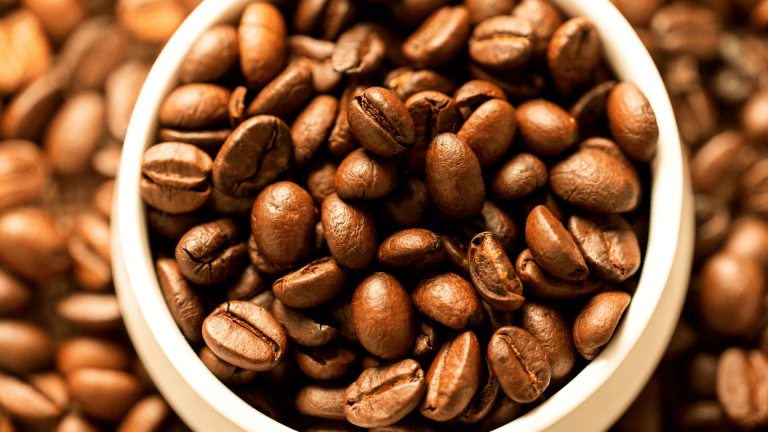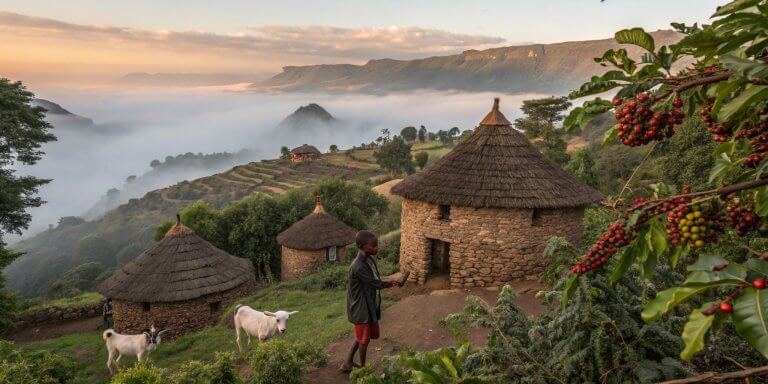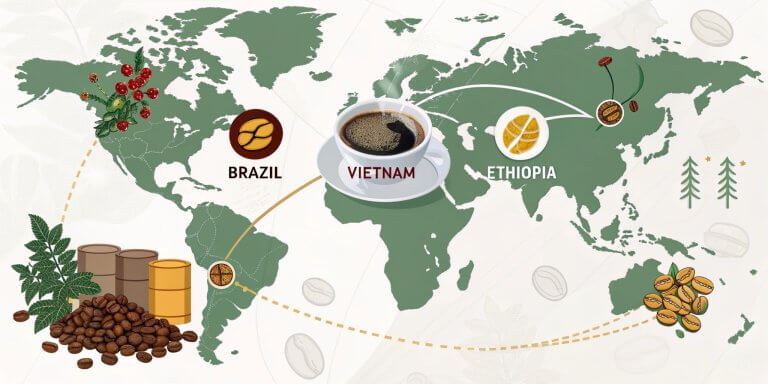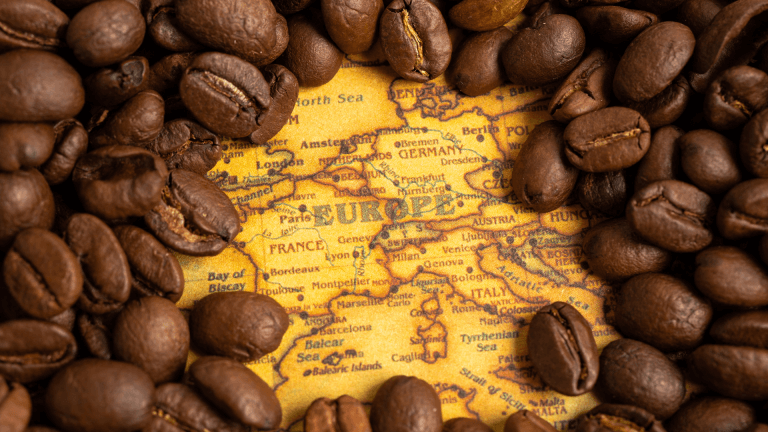From Farm to Cup: The Complete Journey of a Coffee Bean
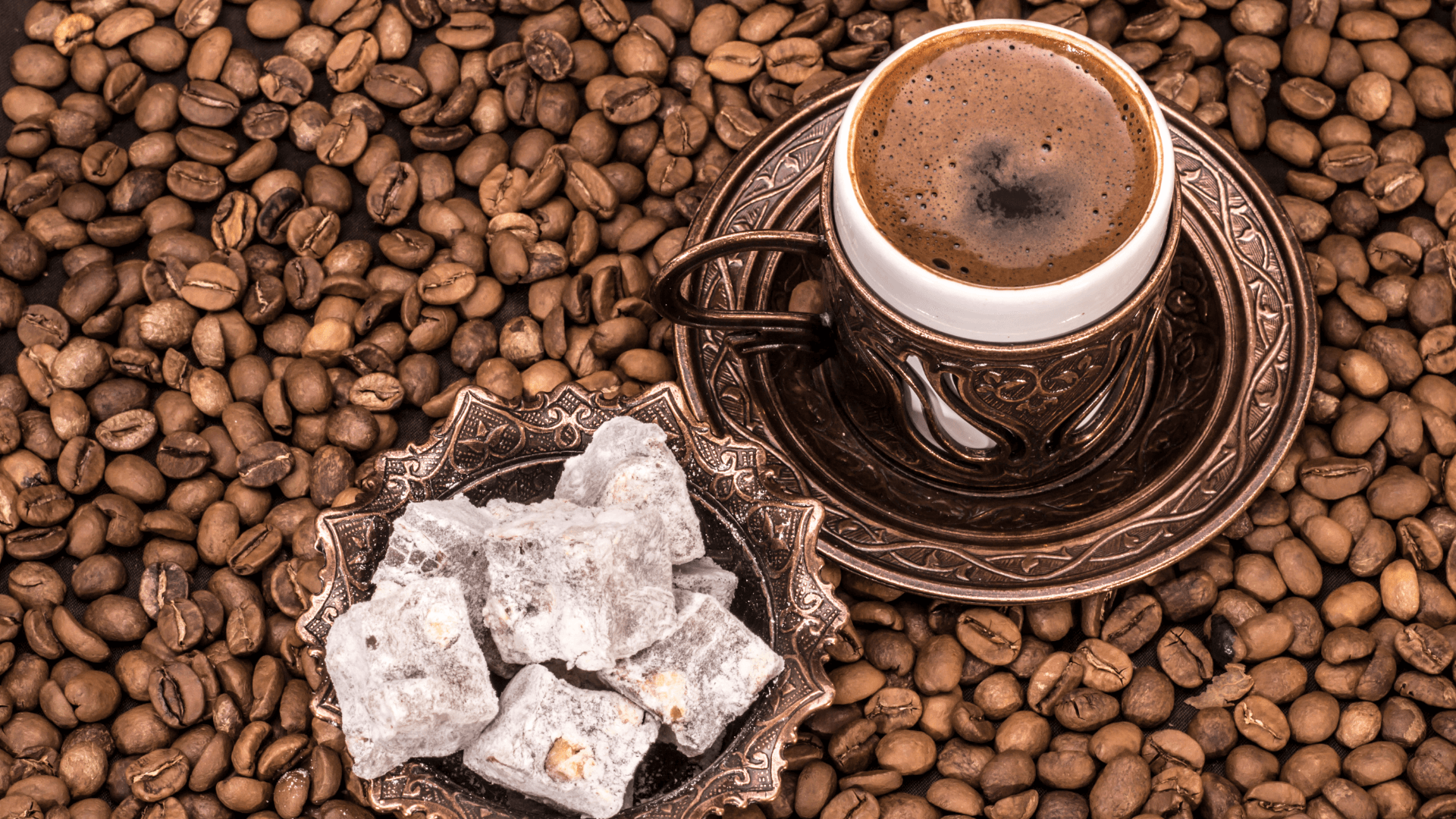
Coffee is more than just a morning ritual; it’s a globally celebrated beverage millions enjoy daily. Yet, the journey from the coffee farm to the cup is complex and involves numerous steps, processes, and people, including you, the coffee enthusiast. From the moment a coffee cherry is harvested to the final brew, every stage plays a crucial role in shaping the taste and quality of your cup. In this blog, we’ll take a deep dive into the fascinating journey of a coffee bean, exploring how it transforms from a fruit on a tree into the drink that fuels our day.
The Origin: Coffee Growing Regions
The journey of a coffee bean begins in the coffee belt, the region between the Tropics of Cancer and Capricorn, where optimal coffee-growing conditions exist. This area includes parts of Latin America, Africa, and Asia, each with unique climates, altitudes, and soil types that give birth to a diverse range of coffee flavors, from well-balanced and mild to bright and fruity, and even earthy and spicy.
- Latin America: Countries like Brazil, Colombia, and Costa Rica are known for producing well-balanced, mild coffees with hints of fruit or nut flavors.
- Africa: Nations like Ethiopia and Kenya produce coffees with bright acidity and fruity or floral notes.
- Asia: Vietnam, the world’s largest producer of Robusta coffee, and Indonesia are known for the earthy, spicy flavors often found in their Robusta varieties.
The variety of coffee beans, primarily Arabica and Robusta, also significantly impacts flavor. Arabica beans are typically sweeter, with higher acidity and more complexity, while Robusta beans are more bitter and stronger, often used in espresso blends.
Planting and Growing Coffee
The journey of a coffee bean starts when the seeds are planted. Coffee plants take about 3-5 years to mature and produce coffee cherries, the fruit that houses the beans. The growth process requires specific conditions, including temperature, elevation, rainfall, and shade.
- Climate and Altitude: Higher altitudes typically produce more flavorful coffee because the cooler temperatures slow down the cherry’s growth, allowing the beans to develop more complex flavors.
- Farming Practices: Sustainable methods, such as shade-grown coffee and organic farming, play a crucial role in maintaining biodiversity and protecting the environment. As coffee enthusiasts, it’s essential to be aware of these practices and support them to ensure the future of our beloved beverage. As the trees grow, the farmers must carefully nurture them, often in mountainous regions, and ensure the plants remain healthy to yield the highest-quality cherries.
Harvesting Coffee Cherries
When the cherries are ripe, the next step is harvesting. This labor-intensive process varies by region and farm size.
- Manual Harvesting: Coffee cherries are picked by hand in many parts of the world. Selective picking ensures that only the ripest cherries are harvested, which is crucial for producing high-quality coffee. Farmers often return to the same tree multiple times during the harvest season.
- Mechanical Harvesting: Machines may harvest the cherries more quickly in larger farms, particularly in Brazil. However, this method can lead to a mix of ripe and unripe cherries, potentially affecting flavor.
Harvesting is a critical stage in the coffee journey, as the cherries’ quality directly impacts the final product’s quality.
Processing Coffee Cherries: Washed, Natural, and Honey Methods
Once harvested, the coffee cherries must be processed to extract the beans. The processing method significantly influences the coffee’s flavor profile.
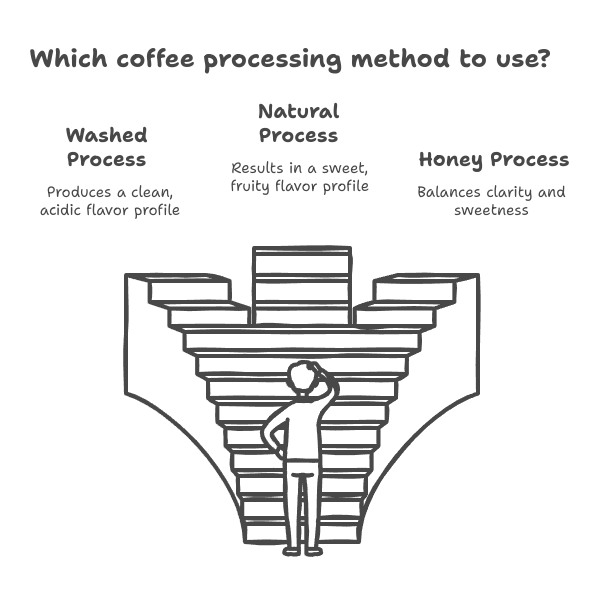
- Washed Process (Wet Processing): In this method, the pulp is removed from the cherries before fermentation. The beans are then washed to remove any remaining mucilage and dried. Washed coffee tends to have a cleaner, more acidic flavor.
- Natural Process (Dry Processing): The cherries are dried with the fruit still intact, allowing the beans to absorb the sugars from the fruit. This results in a sweeter, fruitier coffee.
- Honey Process: A hybrid method where part of the cherry’s pulp is left on the beans during drying. This method produces a coffee balanced between the clarity of washed coffee and the sweetness of natural coffee.
Each method requires careful attention to detail, and the processing method choice depends on regional traditions, climate, and the desired flavor profile.
Milling: Hulling, Polishing, and Grading Coffee Beans
After processing, the coffee beans undergo milling, which includes several key steps:
- Hulling: The dried coffee cherries (or parchment) are hulled to remove the outer layer and expose the green coffee beans.
- Polishing: This optional step removes any remaining silver skin, improving the appearance of the beans.
- Grading and Sorting: Beans are sorted based on size, weight, and quality. Specialty coffee is rigorously graded to ensure only the best beans are sold, while lower-quality beans may be used for commercial-grade coffee.
This meticulous process ensures consistency, which is essential for producing high-quality coffee.
Exporting Green Coffee Beans
Once the beans are milled, they are ready to be exported. Green coffee beans are shipped worldwide, primarily from producing countries in the coffee belt to consuming countries.
- Logistics: Exporters, importers, and cooperatives are crucial in ensuring the beans are adequately transported and maintaining their freshness and quality during transit.
- Global Trade: The coffee industry is a multi-billion-dollar global market, and fluctuating coffee prices can significantly impact farmers’ livelihoods.
Sustainable trade practices, such as Fair Trade and Direct Trade, aim to ensure that coffee farmers receive fair compensation for their work. Direct Trade, for instance, involves a direct relationship between the coffee buyer and the farmer, often resulting in higher prices for the farmer’s produce.
Roasting: The Science and Art of Roasting Coffee Beans
When the green coffee beans arrive at their destination, they are roasted to bring out the flavor. Roasting is both a science and an art, requiring skill to balance the temperature and time for the desired flavor profile.
- Roast Levels:
- Light Roast: Preserves the bean’s original flavor, producing a brighter, more acidic coffee.
- Medium Roast: A balance between acidity and body, often highlighting the bean’s inherent sweetness.
- Dark Roast: Brings out the roast flavor more than the bean’s origin, resulting in a bolder, sometimes smoky flavor.
- Chemical Reactions: During roasting, beans undergo the Maillard reaction and caramelization, which develop the complex flavors and aromas we associate with coffee.
Roasting transforms the humble green bean into an aromatic coffee bean ready for brewing.
Grinding: The Importance of Grind Size
Grinding is a crucial step that directly affects how the coffee extracts during brewing.
- Grind Sizes: Different brewing methods require different grind sizes for optimal flavor. For example, a coarse grind is ideal for French press, while a fine grind is best for espresso.
- Freshness: Grinding coffee just before brewing ensures the freshest taste, as ground coffee quickly loses its flavor when exposed to air.
Choosing the right grind size is essential for unlocking the full potential of the beans during brewing.
Brewing: Turning Coffee Beans into the Perfect Cup
Brewing is the final step, where all the hard work of growing, processing, and roasting culminates in a delicious cup.
- Brewing Methods:
- Espresso: A concentrated coffee brewed under pressure, known for its rich, intense flavor.
- Drip Coffee: A popular method that uses a filter and hot water to produce a balanced cup.
- French Press: Known for producing a full-bodied, robust coffee.
- Pour-over is a manual brewing method that offers control over the brewing process and produces a clean, bright cup.
- Cold Brew: Coffee steeped in cold water for an extended time, yielding a smooth, low-acidity brew.
- Factors to Consider: The coffee-to-water ratio, brewing time, and water temperature all affect the flavor and strength of coffee.
Each brewing method highlights different aspects of the coffee’s flavor profile, allowing drinkers to tailor their experience.
The Role of Baristas: Crafting the Perfect Cup
While many enjoy brewing coffee at home, professional baristas bring an extra layer of skill to the table.
- Barista Techniques: Skilled baristas understand the nuances of grind size, extraction time, and milk frothing to craft the perfect cup of coffee.
- Specialty Coffee: With the rise of third-wave coffee, specialty coffee shops emphasize quality, sourcing, and brewing techniques that showcase the coffee’s origin.
A well-trained barista can elevate the coffee experience, turning a cup of coffee into an art form.
Sustainability in the Coffee Supply Chain
Sustainability is becoming an increasingly important part of the coffee industry, both environmentally and socially.
- Environmental Impact: Coffee farming can contribute to deforestation, water waste, and biodiversity loss. Sustainable practices, like shade-grown coffee and organic farming, help mitigate these effects.
- Fair Trade: Ensuring that coffee farmers are paid fair wages and work in safe conditions is critical for the long-term sustainability of the coffee industry.
- Consumer Choices: By choosing ethically sourced coffee, consumers can support sustainability efforts in the industry.
Sustainable coffee tastes good and helps ensure a future for the farmers and ecosystems that produce it.
Conclusion
Understanding the journey of a coffee bean from farm to cup adds depth to your coffee experience. Knowing how climate, processing methods, roasting, and brewing all impact flavor can transform your daily coffee routine into a moment of appreciation for the craftsmanship involved.
The journey of a coffee bean is a long and intricate process, from the fields where it’s grown to the cup of coffee you enjoy. Each stage, from planting and harvesting to roasting and brewing, contributes to the final flavor of your coffee. By understanding this process, we can better appreciate the care, skill, and dedication that go into every cup. Next time you sip your coffee, take a moment to consider the incredible journey it has made—from farm to cup.

